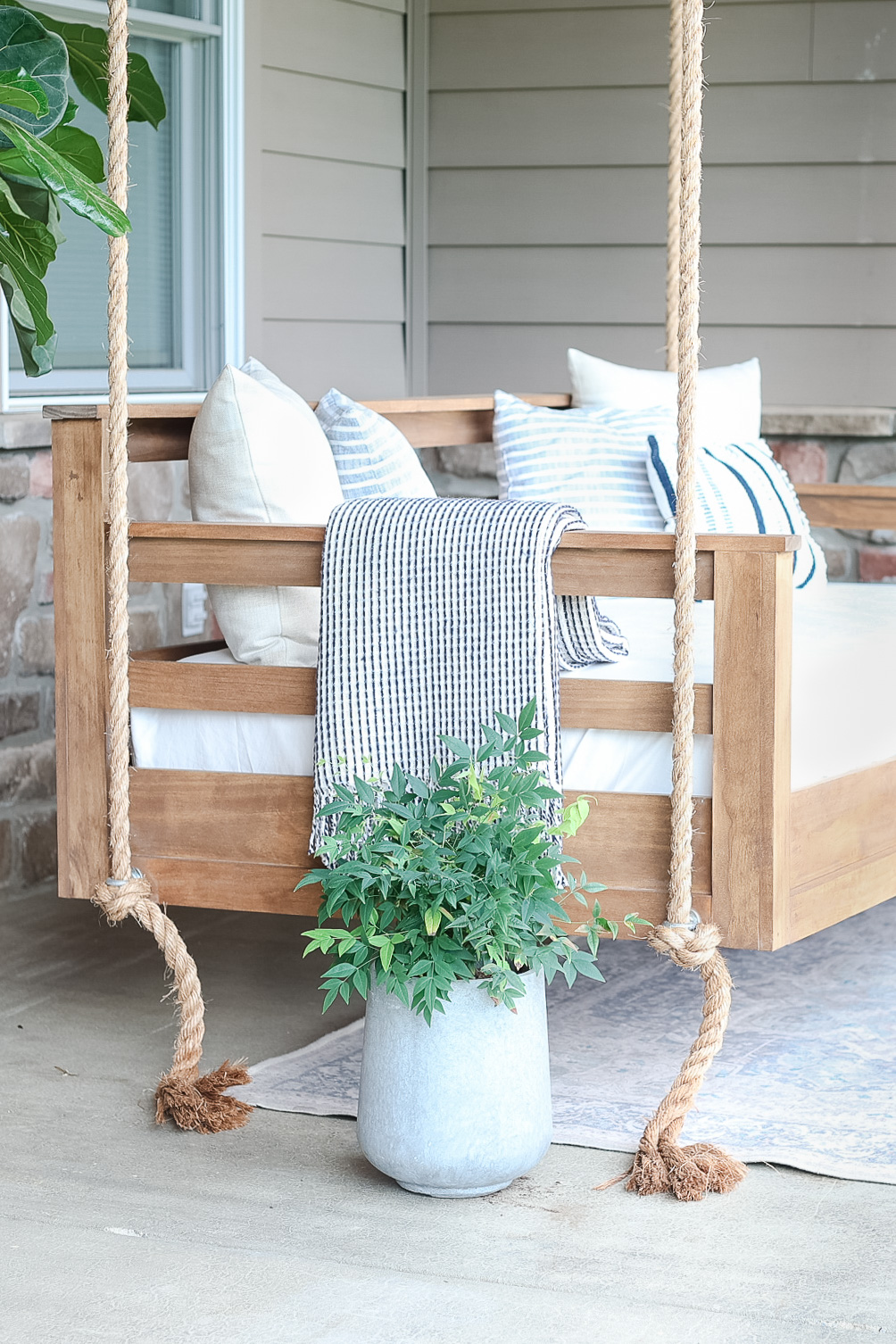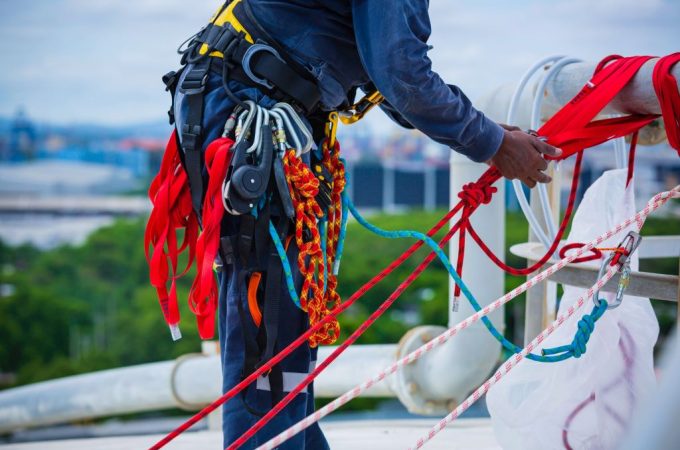
How to Hang a Porch Swing With Rope: Easy DIY Tips
To hang a porch swing with rope, first, secure J-hooks into ceiling joists and then tie knots at the desired height. Attach each rope to a swing hook on the swing seat, ensuring even lengths for balance.
Contents at a Glance
ToggleHanging a porch swing can transform any outdoor space into a cozy retreat. It’s a straightforward DIY project that adds a charming feature to your home’s exterior. Before starting, you’ll need to gather the right materials, including a sturdy rope—preferably marine-grade for durability—and reliable hardware for secure installation.
Choosing the perfect spot for your swing is crucial; opt for a shaded area with a solid beam or joist overhead. Safety is paramount, so double-check the weight capacity and integrity of your porch structure. With the right tools and attention to detail, you’ll be ready to install your porch swing for endless hours of relaxation and enjoyment.
Gather Your Materials
Gathering the necessary materials is the first essential step in the process. Ensure that you have a high-quality synthetic rope, known for its durability and resistance to weather elements. The porch swing should be sturdy and able to support the weight of intended users. Use a measuring tape to determine the exact length needed for the rope. You’ll require a drilling machine with various bits for creating pilot holes for the eyebolts.
A set of eyebolts and washers will provide secure points of attachment for the swing. Consider opting for carabiners or S-hooks, as they offer ease of attachment and adjustment of the swing. Lastly, a level is critical to ensure that your porch swing hangs evenly, providing a comfortable and safe seating experience. Make sure all the materials match the manufacturer’s requirements and safety standards for best results.
Safety Precautions
Selecting the right rope for your porch swing is crucial for durability and safety. Ensure the rope’s material is strong enough to support the weight capacity of the swing plus occupants. Look for ropes specifically designed for outdoor use, with high tensile strength.
Understanding the weight capacity considerations is imperative. The rope should support at least 600 pounds to accommodate the swing and multiple people. It’s recommended to check the manufacturer’s specifications for your swing and choose a rope that exceeds the maximum weight limit.
Weather resistance features are also essential. Opt for materials like polypropylene or polyester, which are resistant to moisture and UV rays, preventing the rope from deteriorating over time.
Before hanging, perform safety checks pre-hanging. Inspect the rope for any signs of wear, fraying, or damage. It is vital to ensure the rope, swing, and hardware are all in excellent condition to ensure utmost safety.
Choose The Perfect Spot
Choosing the perfect spot for your porch swing involves a thorough assessment of the porch structure to ensure it can support the swing’s weight. It’s crucial to locate a strong support beam above the porch to safely anchor the swing ropes. Space is also a key consideration; there should be enough room for the swing to move freely without hitting the porch rails or walls. Additionally, consider the direction of sun exposure; you might prefer a shady area to avoid direct sunlight. The view from your porch swing is just as important for maximum enjoyment; choose a spot that offers the best vantage point of your surroundings.
Accurate Measurements Matter
Accurate measurements are the cornerstone for successfully hanging a porch swing with rope. Begin by measuring the length and width of your swing, and ensure that you allocate enough space around the swing for safe clearance. Typically, allow at least 2 to 3 feet of space on the sides and about 4 feet of space in front and behind the swing.
To mark drill locations precisely, verify that each mark aligns with your porch’s overhead support beams. Use a measuring tape and a level to find the right spots. The marks should correspond to the swing’s width, ensuring that the ropes will hang straight and support the swing evenly.
Ensuring symmetry is crucial not only for the swing’s aesthetics but also for its function. Unevenly spaced or misaligned drill locations can cause the swing to tilt or sway improperly. Double-check all measurements before drilling to maintain symmetry and balance for a perfectly level porch swing.
Setting Up Mounting Points
Proper installation of a porch swing starts with locating ceiling joists, which are crucial to support the swing’s weight. Use a stud finder to accurately identify the joists’ positions. Once located, mark the center of each joist for pre-drilling holes to avoid wood splitting. Pre-drilling should be done using a drill bit slightly smaller than the size of the eyebolts to ensure a snug fit.
Next, carefully securing eyebolts is essential for safety and stability. Twist each eyebolt into the pre-drilled holes by hand until tight and ensure they can support the swing’s weight, including dynamic load when in use. If necessary, use pliers or a wrench to fully tighten the eyebolts. This will serve as the primary mounting points for the porch swing, ready for the ropes to be attached.

Credit: www.amelialawrencestyle.com
Preparing The Swing
Attaching ropes to your porch swing ensures a secure and enjoyable experience. Begin by selecting a durable, weather-resistant rope, such as braided polyester or marine-grade nylon. For each side of the swing, you’ll need two lengths of rope. Measure twice the distance from the swing’s seat to the porch ceiling and add an extra few feet for adjustments and knots.
Knot types and techniques are crucial for stability. A Bowline knot is recommended for its strength and ease of untying if needed. Create a loop at the end of your rope, thread the other end through the swing’s attachment point, and then back through the loop. Tighten securely.
Ensuring your swing level requires precise adjustments. After attaching the ropes, hang the swing and check for balance. If one side is lower, untie the appropriate knot slightly and adjust the rope length. Retie the knot once you’ve achieved a perfectly level swing.
Rope And Swing Connection
Properly tying the rope to eyebolts is fundamental for the safe installation of a porch swing. First, create a secure knot, such as a bowline or a Figure 8 loop, at one end of the rope. This knot should be attached to the eyebolt that is part of the swing’s hanging assembly. Ensure that the knots are tightened and secure to prevent any slipping or accidents.
Next, attention must be paid to adjusting the swing’s height. The ropes should hang anywhere from 17 to 19 inches off the ground, which is the standard height for comfort and ease of use. The height can be adjusted by precisely measuring and cutting the ropes, or by tying additional knots above the original secure knot to effectively shorten the rope length.
For those seeking a setup with added flexibility, using carabiners is a beneficial approach. Carabiners allow for easy adjustments and removal of the swing when necessary. To use a carabiner, simply attach it to the loop of the rope above the knot, and then connect it directly to the eyebolt. This provides a quick release mechanism, facilitating convenient adjustments and maintenance.
Craft A Comfortable Swing Experience
To ensure a smooth and even swing motion, it’s crucial to fine-tune the rope tension when hanging your porch swing. Begin by suspending the swing at your desired height, typically around 17-19 inches off the ground for optimal comfort. While adjusting, make sure that both sides are evenly balanced – unbalanced ropes can lead to uneven wear and compromise the swing’s stability. After your initial adjustments, take a moment for swing motion testing. Gently sway the swing to observe its motion. Look for a free-moving swing without any hindrance.
Adding accessory additions such as cushions or a throw can enhance the comfort of your porch swing. Prior to adding these, double-check the resilience of the knots and the strength of the rope – these accessories add extra weight, which should be adequately supported. Outdoor-grade pillows are a great choice as they are designed to cope with the elements and provide added plushness to your porch swing. With these considerations in mind, you can create the perfect haven for relaxation right on your porch.
Maintenance And Upkeep
Maintaining a porch swing ensures both safety and longevity. Regular rope inspection is vital; check for fraying, wear, and weather damage. It’s advisable to do this at least once every month. Proper rope care prevents accidents and maintains the swing’s aesthetic appeal.
Cleaning your porch swing should be part of your routine upkeep. A mild soapy solution can be used to wipe down the ropes, removing dirt and grime. Ensure that the ropes dry completely to avoid mildew.
With the changing seasons, seasonal adjustments may be necessary. Winter months may call for storing the swing indoors to prevent damage from cold and moisture, while spring might require tightening of ropes due to natural expansion and contraction. Observing these seasonal changes will keep your swing secure and inviting year-round.
Frequently Asked Questions Of How To Hang A Porch Swing With Rope
What Is The Best Way To Hang A Porch Swing?
To hang a porch swing, locate suitable ceiling joists. Use a drill to secure heavy-duty screw hooks firmly. Attach S-hooks and chains to the swing, ensuring chains are level for even suspension. Always verify the weight limit for safe and secure swinging.
How Do You Hang A High Branch Rope Swing?
Choose a strong, healthy branch at least 8 inches in diameter. Use a ladder to safely reach the branch. Loop a durable rope over the branch and secure it with a tight knot, like a bowline. Double-check the swing’s stability before use.
Always prioritize safety.
How Much Rope Do I Need For A Porch Swing?
To hang a porch swing, you typically need about 10 to 20 feet of rope, depending on ceiling height and swing length. Always account for adjustable slack and secure knots.
What Materials Are Needed To Hang A Porch Swing?
You’ll need strong rope, typically braided polyester or nylon, and secure eye bolts or swing hangers. Ensure the materials support the swing’s weight and resist weather conditions.
Conclusion
Ready to enjoy your new outdoor retreat? Installing a porch swing with rope is simple when you follow these steps. Ensure secure knots and proper measurements for a safe, serene swinging spot. Happy swinging! Now, grab a book or a cool drink and savor the fruits of your labor.





